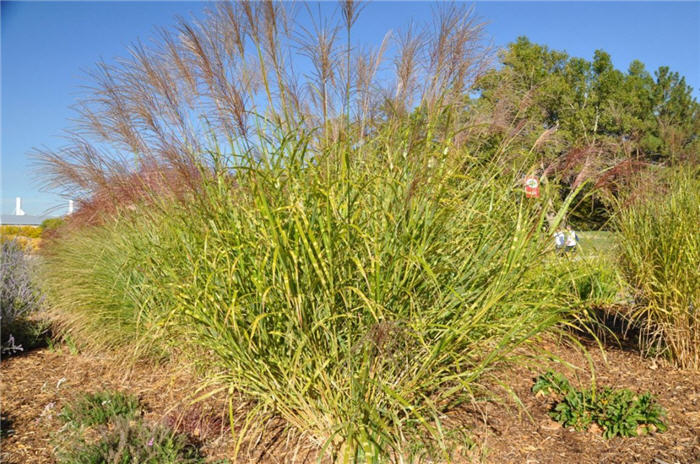| Botanical Name: Miscanthus sinensis 'Little Zebra' | |
| Common Name: Little Zebra Maidengrass |

-
Anatomy
-
Culture
-
Design
Plant Type
Perennial, Grass
Height Range
3-6'
Flower Color
Purple
Flower Season
Summer, Fall
Leaf Color
Green, Yellow, Variegated
Bark Color
n/a
Fruit Color
n/a
Fruit Season
n/a
Sun
Full, Half
Water
Medium, Extra in Summer
Growth Rate
Moderate
Soil Type
Sandy, Clay, Loam
Soil Condition
Average, Rich, Poor, Well-drained, Dry
Soil pH
Neutral, Basic
Adverse Factors
n/a
Design Styles
English Cottage, Formal, Japanese, Mediterranean, Ranch, Seascape, Spanish, Tropical
Accenting Features
Showy Flowers, Specimen, Unusual Foliage
Seasonal Interest
Winter, Summer, Fall
Location Uses
Perennial Border, Shrub Border, Foundation, Patio, Raised Planter
Special Uses
Cut Flowers, Hedge, Screen, Mass Planting, Small Spaces
Attracts Wildlife
Birds
Information by: Stephanie Duer
Photographer:
Photographer:
-
Description
-
Notes
Little Zebra is a naturally occurring dwarf form of Zebra grass. It has the same upward, arching habit, and same wide green foliage with yellow banding. Plumes emerge late summer, a lovely wine purple, eventually turning a tawny hue. Grows about 4 feet tall and wide, with the plumes about a foot higher.
Miscanthus grow in full sun to bright shade, though white variegated forms appreciate a little mid-day shade. Provide well drained soils; sandy-loam to clay-loam will do just fine. All Miscanthus should be cut back in late winter to early spring, about the time that spring bulbs are emerging. Cut back to within inches of the ground. Like other ornamental grasses, Miscanthus pairs well with spring flowering bulbs. See Guides for details.